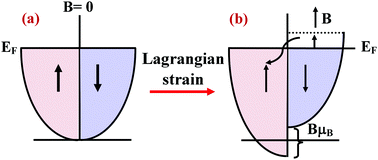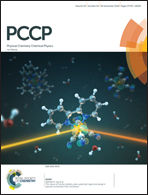Free-standing Pt and Pd nanowires: strain-modulated stability and magnetic and thermoelectric properties†
Abstract
We studied the Lagrangian strain-induced colossal magnetism and thermoelectric performance of platinum (Pt) and palladium (Pd) nanowires (NWs) using first-principles density functional calculations. Pt and Pd NWs were found to be dynamically stable for both strain-free and strained situations. Their cohesive energy and magnetic moment showed decrease and increase, respectively, with an increase in tensile Lagrangian strain (2% to 10%) in the (001) plane. Furthermore, we analyzed the thermodynamic properties using the quasi-harmonic approximation (QHA), heat capacity and internal energy of both NWs originating at 0 K, where their internal energy (E) remained high. For the NWs with the (100) and (010) planes, magnetism exist in the strain-free case, whereas it decreases rapidly on increasing the value of strain. Our results predict the excellent stability, colossal magnetism, and thermoelectric properties of the studied NWs; therefore, these NWs can be used as potential thermoelectric materials for device applications.



 Please wait while we load your content...
Please wait while we load your content...